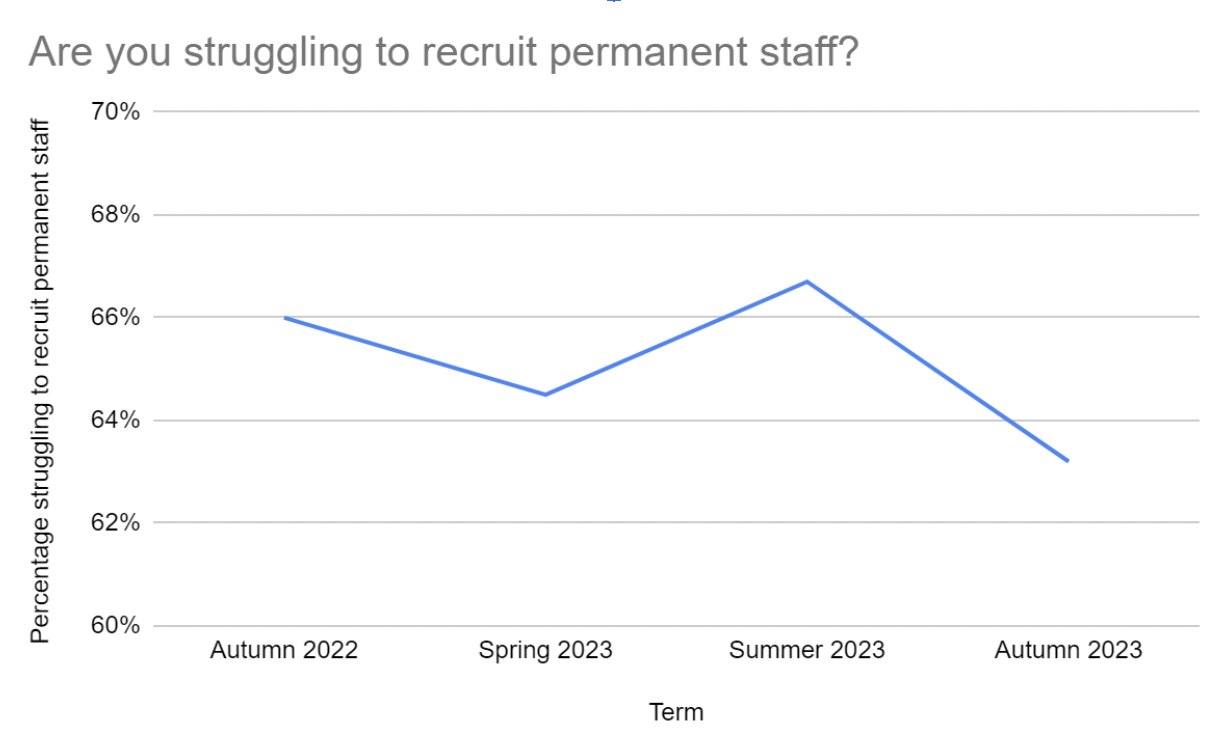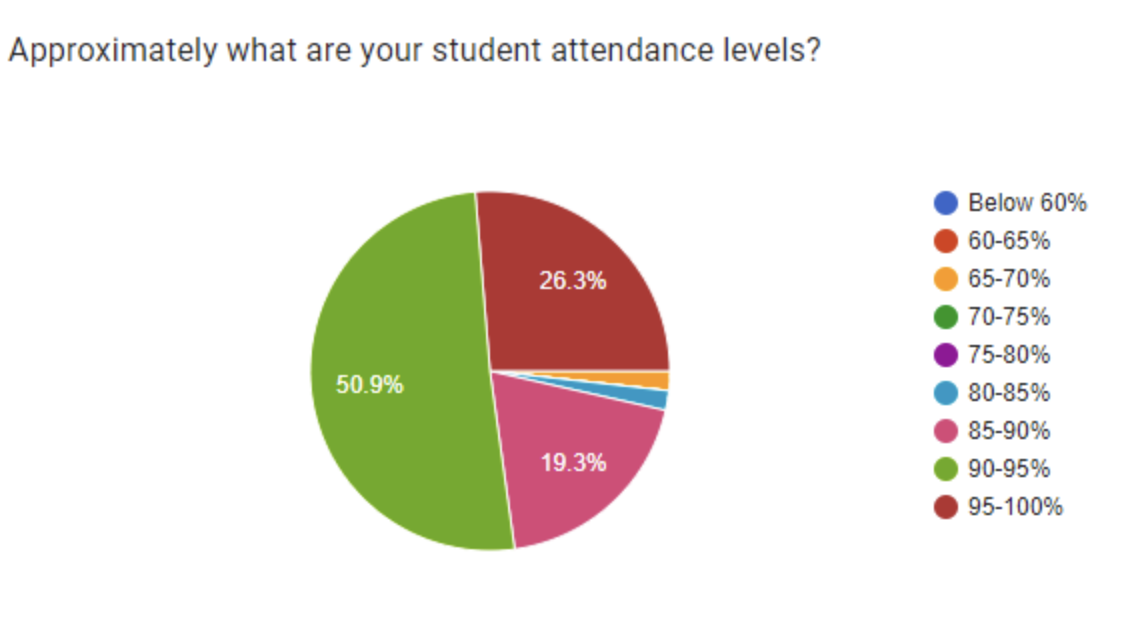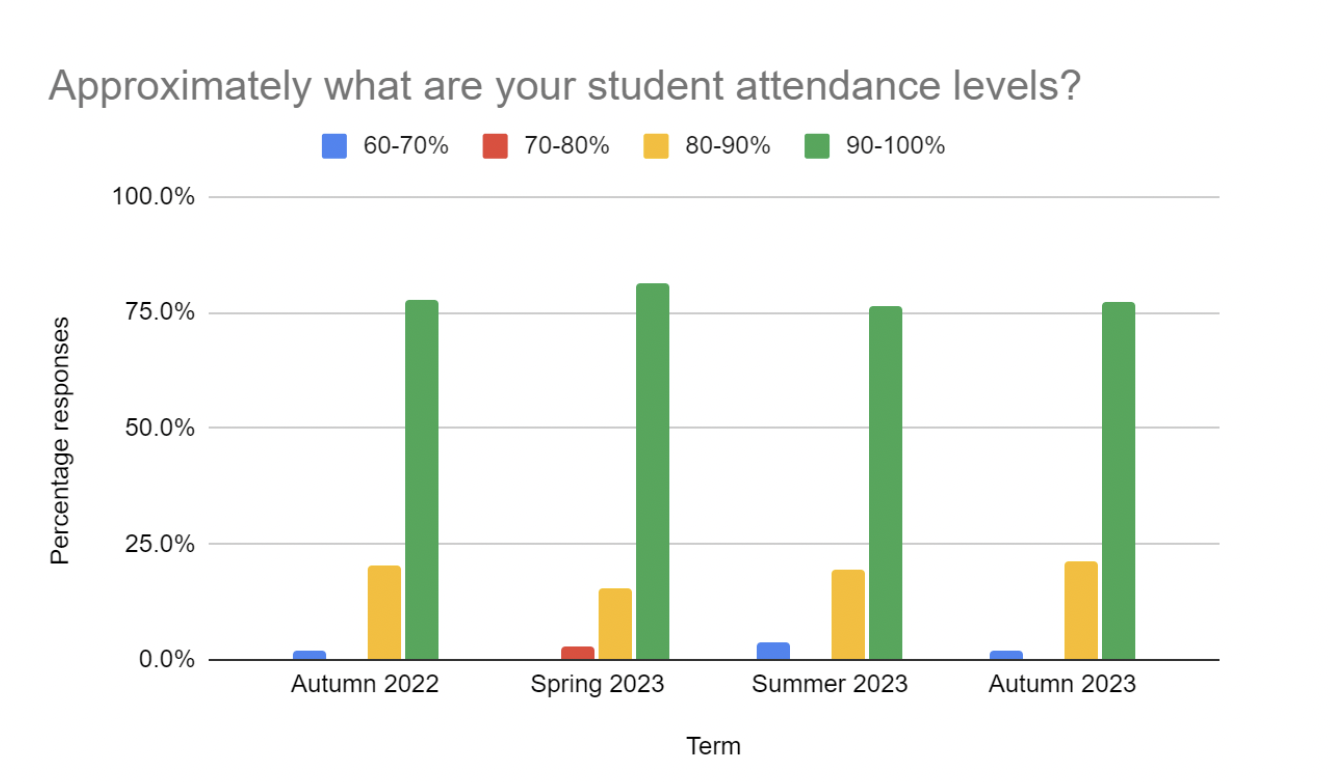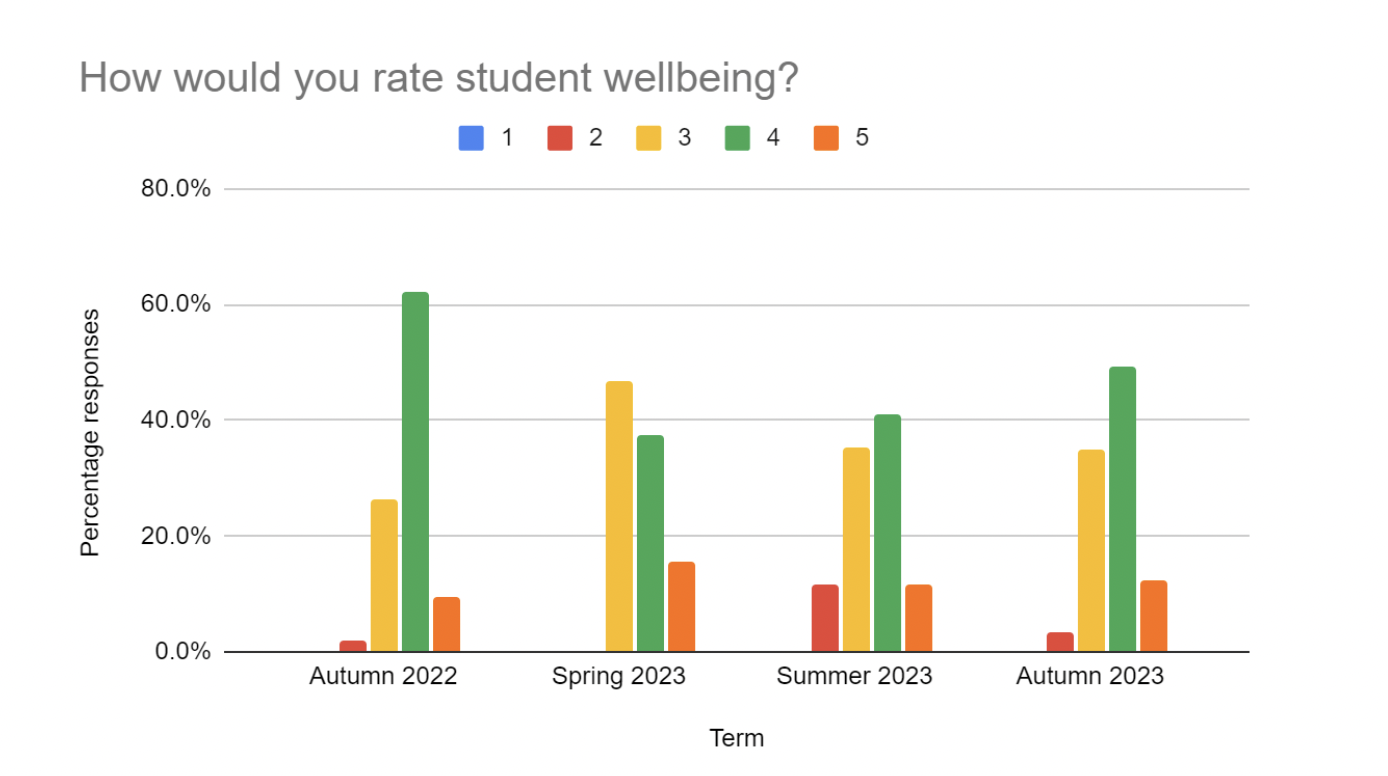We’re only three months into the academic year and already so much has happened. You know what they say: time sure flies when you’re trying to do your best in a sector that's repeatedly facing galling government news, ever-changing expectations, and stressful setbacks.
Well, that’s not quite the saying, but it’s incredibly apt for the UK’s education sector.
These ongoing changes (or in most situations, lack of changes) can alter the trajectory of our schools, which is why we send out a Schools North East’s ‘State of the Region’ survey once per term to understand how schools are currently coping in different key areas.
Hot off the Google drive is our Autumn 23/24 survey, which was sent out in November and collected responses that represented over 200 North East schools.
Staff attendance
We’ll start with something positive, shall we?
The survey revealed that three quarters of respondents have staffing levels above 95 percent, when last term this was below two thirds. So, we can see a continuing trend of improved staff attendance across the last academic year.
A win’s a win.
That being said, however, responses also show increasing difficulties in accessing supply staff to cover staff absences.
Comments highlighted the lower quality of supply staff that were available, and the additional challenges faced by schools in rural areas.
Recruitment and retention
The teacher recruitment and retention crisis has been a hot topic for a while now, and our survey set out to better understand the current landscape in the North East.
The chart shows that, while slightly fewer schools than last year have been struggling to recruit permanent staff, the percentage struggling with recruitment has remained relatively consistent at around two thirds.

Retention of staff this term has improved notably in comparison to last year, which is great news. In the 22/23 academic year, our surveys had an average of 41 percent struggling to retain staff. For Autumn 2023, this has dropped to just under 30 percent.
Staff wellbeing
You probably hear us talk about staff wellbeing often, and that’s because it’s so fundamental to the success of the entire sector.
In our recent survey, we asked respondents to rate staff wellbeing on a scale of 1 to 5, with 5 being good.
Again, we’re celebrating another improvement! Sort of.
While there are more rating wellbeing as a 4 or 5 in comparison to the summer term, most continue to rate wellbeing at a 3, and the percentage doing so has remained relatively consistent over the past year.
When teachers feel supported, valued, and empowered, they’re better able to engage their students and contribute to a thriving school community, which is why it’s a no-brainer that we must continue to improve staff wellbeing. Whatever it takes.
Student attendance
Recent data from the Department for Education revealed there were a total of 72,339 North East students who were persistently absent last year. That works out as 22 percent of pupils in our region.
Naturally, this was a topic we were eager to explore once more in the Autumn 2023 State of the Region survey.
The charts below show student attendance levels for this term, as well as a comparison with the 2022/23 academic year.


Keeping attendance above 90 percent has been a significant struggle since the pandemic, and it continues to be a persistent issue, too.
Attendance levels have remained relatively consistent throughout the 22/23 academic year and into the 2023 autumn term, although slightly more reported attendance as above 95 percent this term!
To continue improving and maintaining good pupil attendance levels, the sector needs additional support in identifying and addressing attendance issues early, as well as making school a more positive, engaging place to be.
Student wellbeing
This term’s survey results revealed that student wellbeing is broadly positive. It’s improved on Spring 2023 and Summer 2023, which is great, although results are below Autumn 2022, which is less great.

Responses said that the majority of students are engaging with and enjoying being in school, which really is delightful to hear. However, there’s a small and increasing number of students with anxiety related issues, SEND, and behavioural needs.
As with attendance, this is impacted by parental attitudes as well as the lack of capacity in the system to support students.
Parental relationships
Parents play a critical role in the success of their children and the wider sector. When exploring parental relationships within the survey, two thirds of schools said they’re facing increased challenges in this area.
Parental expectations on what schools are responsible for have increased dramatically, and, from some parents, there has been a decline in respect for the teaching profession. Not only is this a concerning thought, but it’s also unpleasant.
There have been cases of school staff being abused by parents, both in-person and on social media, and schools dealing with a growing number of what they feel are spurious complaints.
It’s important to note that the majority of parents are supportive of schools, however, we cannot overlook the fact that responses said there’s less respect and trust, and a breakdown of the ‘social contract’.
SEND
Over 90 percent of schools said that they are seeing rising numbers of students with SEND, which is a distressing statistic.
More students have profound educational needs, often because of a lack of early interventions during the pandemic. Many responses said that numbers of SEND students, as well as those with an EHCP, had doubled in the past few years.
Additionally, there have also been increases in speech and language needs, and SEMH needs.
Top priorities
We asked respondents to list up to five top priorities and concerns, and we can’t say that the answers shocked us. Not in the slightest, actually.
Almost all schools mentioned that finances was a key theme preventing schools from meeting the many additional demands they’ve had thrown upon them since the pandemic, particularly when it came to delivering support for SEND students.
Recruitment and retention continues to be a top priority, too, which is unsurprising in this current climate, and workload was also highlighted as a significant issue.
Finally, many responses felt as though education had fallen down the political agenda, and that the government is failing to recognise the challenges schools face. Where have we heard that before?
Schools need a period of stability and consolidation, however education policy currently lacks clear strategic direction, with too many sudden changes.
Chris Zarraga, Director of Schools North East, said: “We’re really pleased to see some positive improvements from this term’s State of the Region survey, however it’s alarmingly clear that we’re still a long, long way from where we want – and need – to be.
“We need a holistic approach that works to remedy each key area, but we’re simply not going to get that until the government takes real notice of the issues our schools are facing, and a real responsibility for those issues.”
So, what’s next?
The purpose of this survey is to monitor key priorities, such as attendance, wellbeing, and recruitment and retention, so that we can understand which issues in particular Schools North East must amplify as the Voice, Glue, and Bridge of North East schools.
Armed with this information, we can ensure education stakeholders and policymakers get an accurate picture of the current environment and challenges faced by North East schools.
Our briefings are sent to a range of strategic stakeholders, including the DfE, Ofsted, and all North East Members of Parliament.
We’ll keep you updated on its journey!
